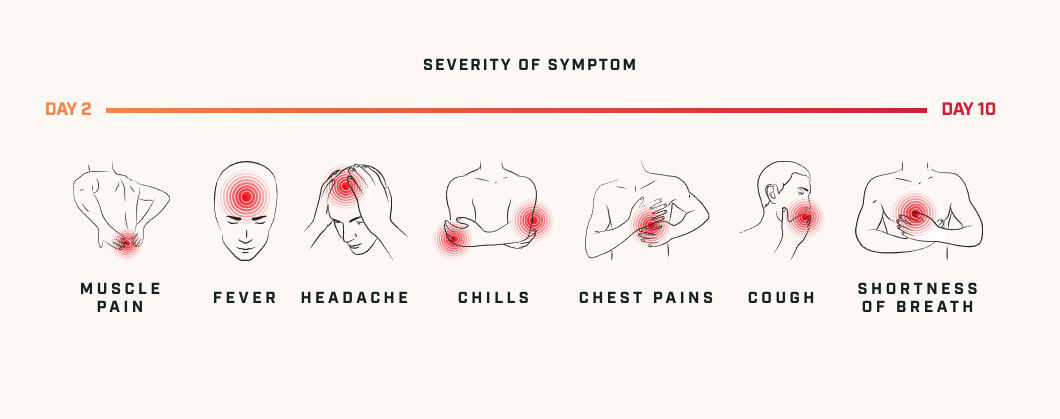For the past year and a half, the COVID-19 virus has taken center stage as one of the most imminent threats to the global population. Given the recent rollout of vaccines coupled with social distancing measures, many businesses, offices, and amusement parks have begun their re-opening procedures, ready to welcome people back.
Due to inactivity and vacancy, many of these places have allowed another threat to emerge: Legionnaire’s Disease. Legionnaire’s Disease is caused by the Legionella bacteria, which resides in fresh water. Outbreaks of this type of bacteria typically occur in sources where water remains stagnant for long periods of time, meaning inactive locations are most at risk.
In this post, we’ll explore symptoms of Legionnaire’s Disease, how to prevent the growth and spread of the Legionella bacteria, and what to do if you’ve contracted Legionnaire’s Disease.
What is Legionnaire’s Disease?
By definition, Legionnaires’ Disease is a severe form of pneumonia caused by the Legionella bacteria. Typically Legionella is not found in nature, but can be introduced to manmade sources of water.
According to this comprehensive Legionnaire’s Disease resource page, the Legionella bacteria thrives in stagnant water, warm water that ranges in 77 to 108 degrees Fahrenheit, and water that does not have adequate disinfectant (such as ample chlorine).
How Can Someone Contract Legionnaire’s Disease?
According to the Centers for Disease Control and Prevention (CDC), people can get sick when they breathe in small droplets of water or swallow water containing the Legionella bacteria into the lungs.
Since the Legionella bacteria is transmitted through water, it can be contracted from aerosolized water vapor or aspirated via a contaminated water source. Common culprits of Legionnaire’s Disease outbreaks are cooling towers, hot tubs, whirlpools, decorative fountains, hot water tanks, and hot water heaters. Showerheads, sink faucets, and old plumbing services where water has been stagnant can also be to blame.
What are Symptoms of Legionnaire’s Disease?
After being infected with the Legionella bacteria, symptoms may develop within 2 to 10 days of exposure. Symptoms often include:
- Muscle pain
- Fever
- Headache
- Chills
- Chest pains
- Cough
- Shortness of breath
- Diarrhea
- Vomiting
- Nausea
Since Legionnaire’s Disease mimics symptoms of the flu or standard pneumonia, it is largely considered one of the most underreported diseases in the world.
Is Legionnaire’s Disease Deadly?
Legionnaire’s Disease typically is not deadly for healthy individuals. Those who are older than 50 years old, immuno-compromised, or those who have chronic lung diseases are most at risk.
According to the CDC, approximately 10% of people who contract Legionnaire’s Disease will die from it.
Is Legionnaires Disease Contagious?
Legionnaire’s Disease is not contagious and cannot be transmitted from one infected person to another.
How Can I Prevent Legionnaire’s Disease?
The key to preventing Legionnaire’s Disease is to combat the growth and spread of the Legionella bacteria. Maintaining building water systems, using disinfectants, and regularly checking levels of disinfectants and chemicals in hot tubs are proactive ways to prevent growth of the Legionella bacteria.
What to do If You’ve Contracted Legionnaire’s Disease
If you are suffering symptoms of Legionnaire’s Disease, immediately seek medical attention. Legionnaire’s Disease can be confirmed with chest x-rays as well as urine tests and sputum tests.
Notify your local and state public health department to alert them of the contamination and make a written history of your activities and locations visited in two weeks prior. This will also be especially helpful if you decide to file a Legionnaire’s Disease lawsuit.
Legionnaire’s Disease is almost always caused by negligence. “Typically the water source’s property owner and possibly the party that has been negligent in cleaning the water source and/or not testing the water for the presence of the Legionella bacteria, are defendants in Legionella cases due to their negligence,” notes Legionnaires’ Disease lawyer Jory Lange.
Defendants in Legionnaire’s Disease lawsuits are property owners, engineers, cleaning companies, water heater manufacturers, plumbers, employers, hotels, spas, hotels, and other large institutional facilities.
Handling a New Fear as the Pandemic Wanes
While many of us are rushing to visit our favorite places due to the lifting of COVID-19 restrictions, it is also important to weigh other risk factors. Legionnaire’s Disease is a very real threat, especially in places that have been deserted due to the pandemic. By understanding the symptoms and causes of the Legionella bacteria, you and your loved ones can help prevent Legionnaire’s Disease and a Legionnaire’s Disease outbreak.





No Comment